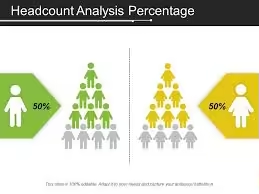Headcount reporting should be a simple process of counting with a tangible result. Nevertheless, it is not as easy as it should be to count the number of people a company hires on a global basis. Headcount discrepancies can be problematic for executives and managers as they slow down or provide incorrect business performance statistics, lead to arguments about who has the right numbers, and add hours of work in the form of manual monitoring and exception reporting.
Headcount modeling includes the development and use of an analytical tool (a headcount model) to analyze the current staff structure and create headcount forecasts. The modeling process can be used as the basis for solutions to a number of important operational and strategic considerations for an entity for example:
- As-is headcount analysis - Consolidating headcount data into an integrated database and analysing the current headcount against the company's structure, functions, grades, age groups. This gives insights into questions like:
- What is the existing headcount structure broken down by function, organisational level, grade?
- What is the current personnel age structure?
- What is the headcount structure broken down by other specific categories used by the company?
- What do the headcount key performance indicators indicate?
Key deliverables include:
- Specification of the task, including the determination of the list of functions and business units in the scope of the modeling, the headcount data sets, the depth of calculation detail amongst other things.
- Interviews with top and middle managers of functional areas in the modeling scope
- Review of the current organisational structures and staff schedules.
- Analysis of production plans and short and medium-term management reports.
The results include the structure of labor input areas such as the process model, including the distribution of current staff by process, the family of qualifications, including the distribution of current staff by qualification and/or other factors, the organizational structure and associated processes or families of qualification and/or other factors and the labor input drivers for each labour input area (performance indicators determining labour input and, as a result, headcount).
- Increase in efficiency and headcount optimisation - Identifying and prioritising areas for headcount optimisation through increased productivity, personnel structure changes. This gives insights into questions like:
- What are the internal and external benchmarks for increased productivity and personnel structure?
- What is the potential for the headcount optimisation due to the productivity increase up to the level of the best practices?
- How to prioritise areas for the headcount optimisation?
The key steps include the collection of the following data:
- Current labour input (headcount)
- Current labour input driver values
- Data collection can be performed through various approaches:
- Survey of representatives of assets, branches and/or business units
- Review of production and administrative reports, regulations and other sources presented upon request
This stage deliverables include a database (as-is situation) with detailed information on current headcount by labour input areas like headcount, gender and age-differentiated characteristics, qualification, work schedule (shifts), level of remuneration and current productivity values by labour input area.
- Headcount demand forecasting - Target headcount forecasting based on production programmes and strategic indicators. This gives insights into questions like:
- What is the headcount required for various strategic scenarios?
- What is the headcount required for the implementation of the production programme?
- What drivers impact headcount demand and how?
Key steps include:
1. Labour input driver value forecasting by area.
Possible options include:
- – Statistics
- – Forecasting based on strategic indicators
- – User-defined
2. Determination of personnel productivity values.
Possible options include:
- – Statistics
- – External best practices
- – Industry regulations, etc.
3. Additional options:
- – Supply forecasting
- – Supply and demand balancing
- – Identification of the number of leaders based on target spans of control
- – Accounting for organisational structure based on the target spans of control, hierarchy levels
The key deliverable is the headcount analysis model
- Headcount supply forecasting - Identifying internal and external sources for the satisfaction of headcount demand according to qualification and function. This gives insights into questions like:
- How many current employees will the entity still have on staff in several years’ time?
- How will changes in career growth programmes impact upon the entity’s grade structure?
- How many employees will be retiring, leaving, moving to other departments, etc. per annum?
- What is the nature of the external headcount supply from key higher education institutions, regions, countries and fields?
- Recruitment needs and personnel development forecasting - Analysing imbalances between current personnel supply and demand, and preparing hiring plans.
- How many employees should be hired over the next few years to fulfil the company’s requirements by function and qualification?
- How will recruitment impact upon the entity’s personnel structure?
The model will result in the following, depending on the goals set:
• Medium-term and long-term headcount supply and demand forecasting
• List of areas for headcount optimisation prioritised based on various criteria, for example:
– Absolute and relative headcount change
• Target headcount for specified planned performance indicators
• Target productivity levels based on internal benchmarking for assets, branches or business units,– Personnel cost reduction.
Modeling headcount is not limited to use in the implementation of the above tasks. For each new task related to headcount or staff costs, a special methodology can be created, resulting in a headcount model with the analytical units to solve the problem.
Ifeoma is a Business Analytics and Research Consultant at Industrial Psychology Consultants (Pvt) Ltd, a business management and human resources consulting firm.
LinkedIn: https://www.linkedin.com/in/ifeoma-obi-92b4b9121/
References
- Www2.deloitte.com. (2020). [online] Available at: https://www2.deloitte.com/content/dam/Deloitte/ru/Documents/Operation/headcount-modelling-en.pdf [Accessed 6 Jan. 2020].

